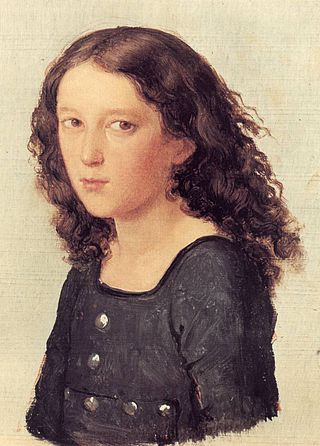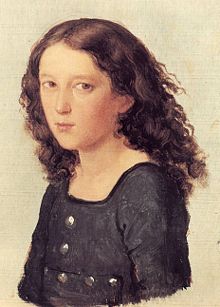
Jakob Ludwig Felix Mendelssohn Bartholdy, born and widely known as Felix Mendelssohn, was a German composer, pianist, organist and conductor of the early Romantic period. Mendelssohn's compositions include symphonies, concertos, piano music, organ music and chamber music. His best-known works include the overture and incidental music for A Midsummer Night's Dream, the Italian Symphony, the Scottish Symphony, the oratorio St. Paul, the oratorio Elijah, the overture The Hebrides, the mature Violin Concerto and the String Octet. The melody for the Christmas carol "Hark! The Herald Angels Sing" is also his. Mendelssohn's Songs Without Words are his most famous solo piano compositions.

The Piano Quintet in E-flat major, Op. 44, by Robert Schumann was composed in 1842 and received its first public performance the following year. Noted for its "extroverted, exuberant" character, Schumann's piano quintet is considered one of his finest compositions and a major work of nineteenth-century chamber music. Composed for piano and string quartet, the work revolutionized the instrumentation and musical character of the piano quintet and established it as a quintessentially Romantic genre.

The Symphony No. 5 in D major/D minor, Op. 107, known as the Reformation, was composed by Felix Mendelssohn in 1830 in honor of the 300th anniversary of the Presentation of the Augsburg Confession. The Confession is a key document of Lutheranism and its Presentation to Emperor Charles V in June 1530 was a momentous event of the Protestant Reformation. This symphony was written for a full orchestra and was Mendelssohn's second extended symphony. It was not published until 1868, 21 years after the composer's death – hence its numbering as '5'. Although the symphony is not very frequently performed, it is better known today than when it was originally published. Mendelssohn's sister, Fanny Mendelssohn Hensel, chose the name Reformation Symphony.

The Symphony No. 3 in A minor, Op. 56, known as the Scottish, is a symphony by Felix Mendelssohn, composed between 1829 and 1842.

The String Octet in E-flat major, Op. 20, was written by the 16-year-old Felix Mendelssohn during the fall of 1825 and completed on October 15. Written for four violins, two violas, and two cellos, this work created a new chamber music genre. Conrad Wilson summarizes much of its reception ever since: "Its youthful verve, brilliance and perfection make it one of the miracles of nineteenth-century music." This was one of the first works of Mendelssohn to be very well received.

Symphony No. 1 in C minor, Op. 11, is a work by Felix Mendelssohn, completed on 31 March 1824, when the composer was only 15 years old. The autograph score was published in 1831.
The String Quartet No. 2 in A minor, Op. 13, was composed by Felix Mendelssohn in 1827. Written when he was 18 years old, it was, despite its official number, Mendelssohn's first mature string quartet. One of Mendelssohn's most passionate works, the A minor Quartet is one of the earliest and most significant examples of cyclic form in music.

The Piano Trio No. 2 in C minor, Op. 66, was written by Felix Mendelssohn in 1845 and published in February 1846. The work is scored for a standard piano trio consisting of violin, cello and piano. Mendelssohn dedicated the work to his close friend and violinist, Louis Spohr, who played through the piece with the composer at least once.
The Violin Sonata in F minor, Op. 4, for violin and piano was composed by Felix Mendelssohn in 1823 and is the only one to carry an opus number. Mendelssohn composed two other violin sonatas, both in F major, that were not published in his lifetime. This was published with a dedication to his friend and violin teacher, Eduard Rietz, who was also dedicatee of the composer's Octet in E-flat major, Op. 20.
Felix Mendelssohn's Sextet in D major, Op. 110, MWV Q 16, for piano, violin, two violas, cello, and double bass was composed in April–May 1824, when Mendelssohn was only 15, the same time he was working on a comic opera Die Hochzeit des Camacho. Its composition took place between the Viola Sonata and the Piano Quartet No. 3. It also preceded the famous Octet, Op. 20 by about a year. 1824 is also the probable year of the composition of the Clarinet Sonata. Like the latter, the Sextet was not published during the composer's lifetime. Its first edition was issued in 1868 as a part of a complete collection of Mendelssohn's works. Hence the misleading high opus number.
The Violin Sonata in F major, composed in 1820 by Felix Mendelssohn at the age of eleven, has three movements:
- Allegro
- Andante
- Presto
Felix Mendelssohn's Piano Quartet No. 1 in C minor, Op. 1, for piano, violin, viola and cello was completed on 18 October 1822 and dedicated to Polish Prince Antoni Radziwiłł. Mendelssohn's three numbered piano quartets were the first works of his to be published, hence their opus numbers.
Felix Mendelssohn began composing his Piano Quartet No. 3 in B minor, Op. 3, for piano, violin, viola and cello in late 1824 and completed it on 18 January 1825, just before his sixteenth birthday. The quartet was published later that year and was dedicated to Goethe whom Mendelssohn had met a few years earlier. Mendelssohn's three numbered piano quartets were the first works of his to be published, hence their opus numbers.

The Clarinet Sonata in E-flat major is a composition for clarinet and piano by Felix Mendelssohn.

Felix Mendelssohn's six Organ Sonatas, Opus 65, were published in 1845. Mendelssohn's biographer Eric Werner has written of them: "Next to Bach's works, Mendelssohn's Organ Sonatas belong to the required repertory of all organists."
The Piano Trio in C minor, MWV Q3, is a chamber work by Felix Mendelssohn. It was composed in 1820 and published posthumously in 1970. Unlike many other piano trios, this work is scored for piano, violin and viola. In key, all the movements are in minor, ending also in minor. Among the works by Mendelssohn, this is one of those least performed and recorded.

The Concerto for Piano, Violin, and Strings in D minor, MWV O4, also known as the Double Concerto in D minor, was written in 1823 by Felix Mendelssohn when he was 14 years old. This piece is Mendelssohn's fourth work for a solo instrument with orchestral accompaniment, preceded by a Largo and Allegro in D minor for Piano and Strings MWV O1, the Piano Concerto in A Minor MWV O2, and the Violin Concerto in D minor MWV O3. Mendelssohn composed the work to be performed for a private concert on May 25, 1823 at the Mendelssohn home in Berlin with his violin teacher and friend, Eduard Rietz. Following this private performance, Mendelssohn revised the scoring, adding winds and timpani and is possibly the first work in which Mendelssohn used winds and timpani in a large work. A public performance was given on July 3, 1823 at the Berlin Schauspielhaus. Like the A minor piano concerto (1822), it remained unpublished during Mendelssohn's lifetime and it wasn't until 1999 when a critical edition of the piece was available.

The sonatas for viola da gamba and harpsichord, BWV 1027–1029, are three sonatas composed by Johann Sebastian Bach for viola da gamba and harpsichord. They probably date from the late 1730s and early 1740s.
A concert piece is a musical composition, in most cases in one movement, intended for performance in a concert. Usually it is written for one or more virtuoso instrumental soloists and orchestral or piano accompaniment.








